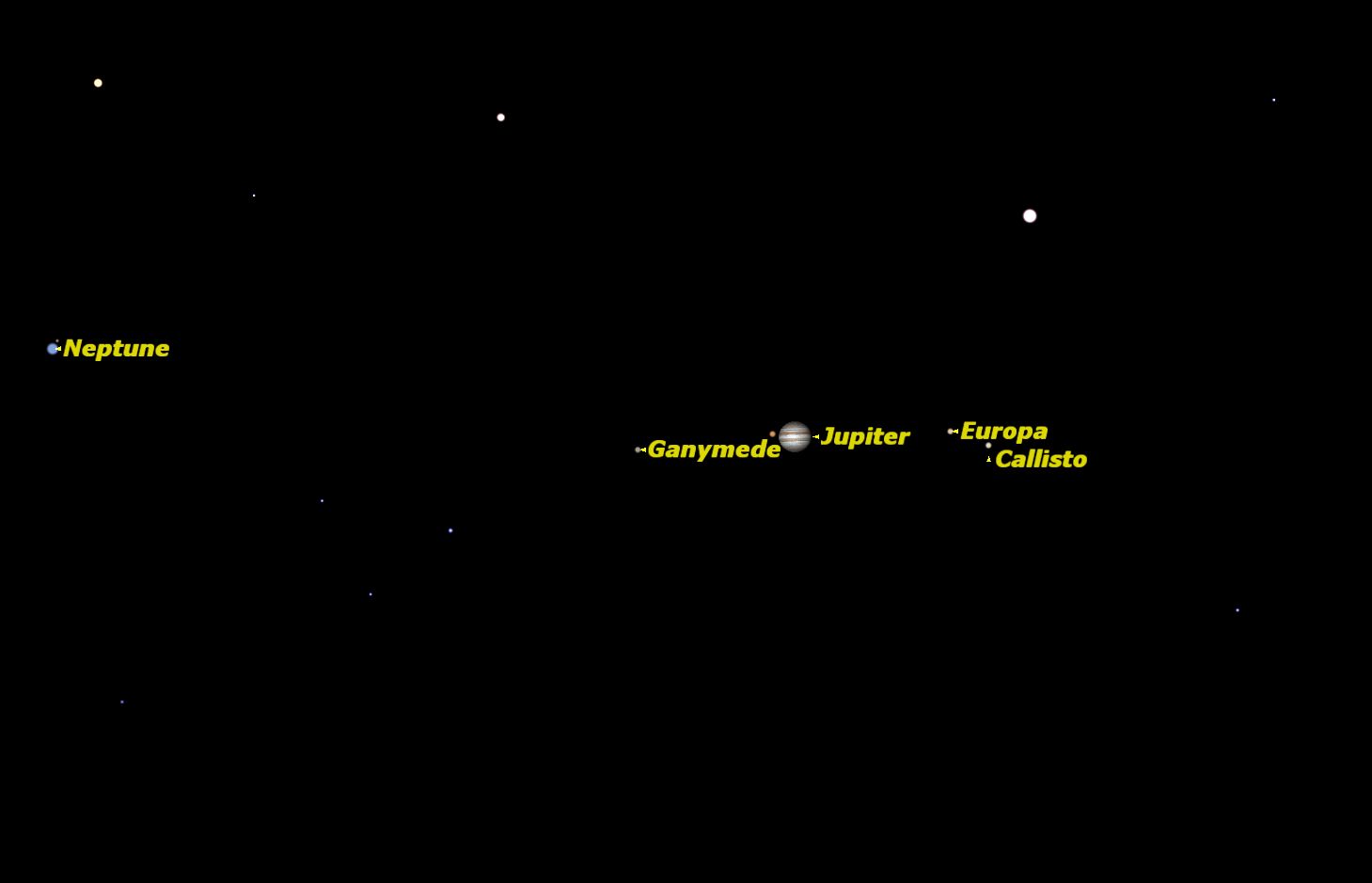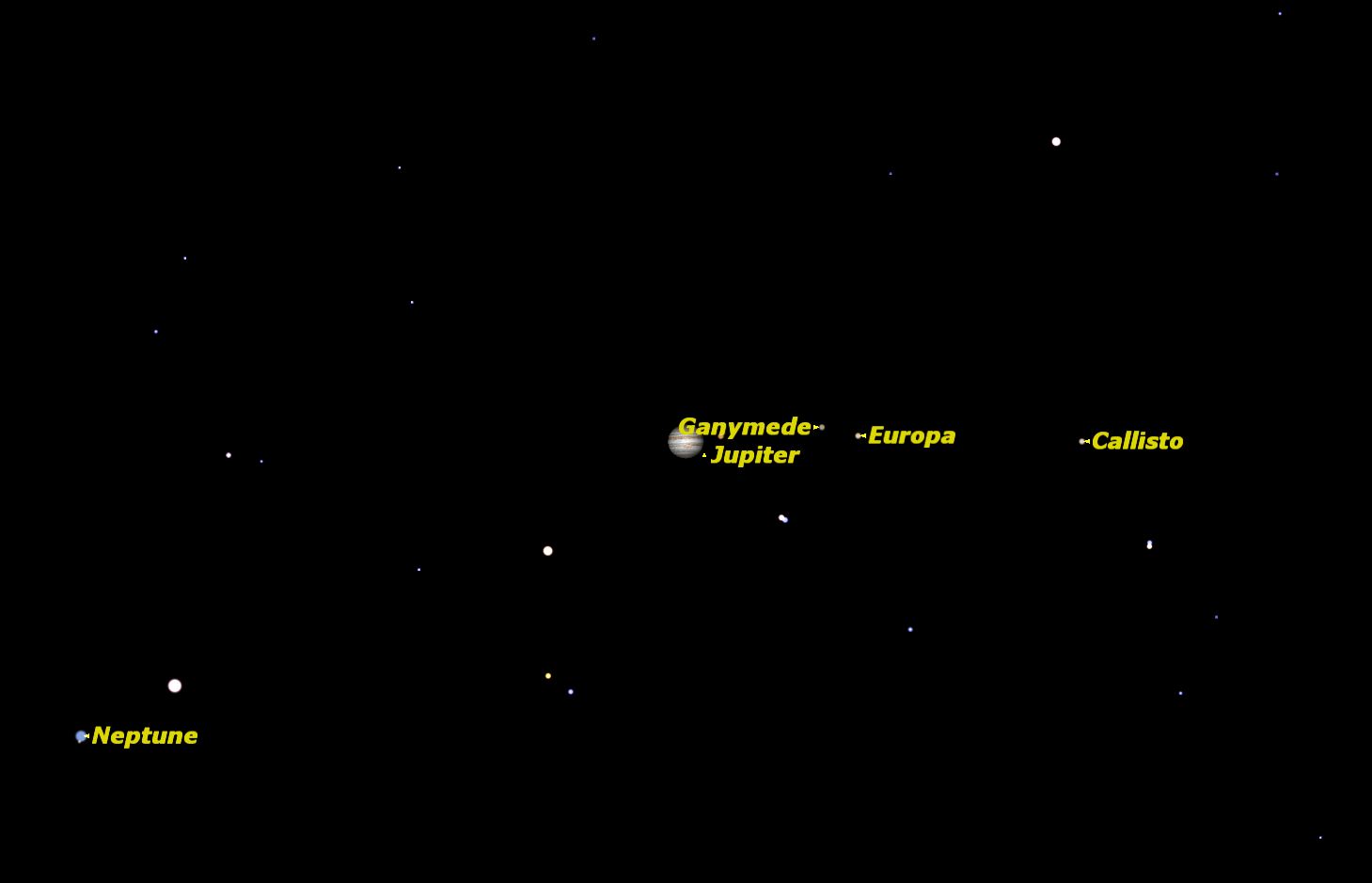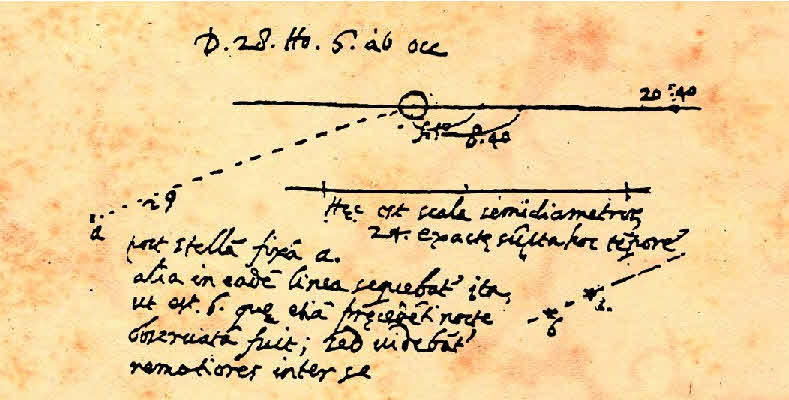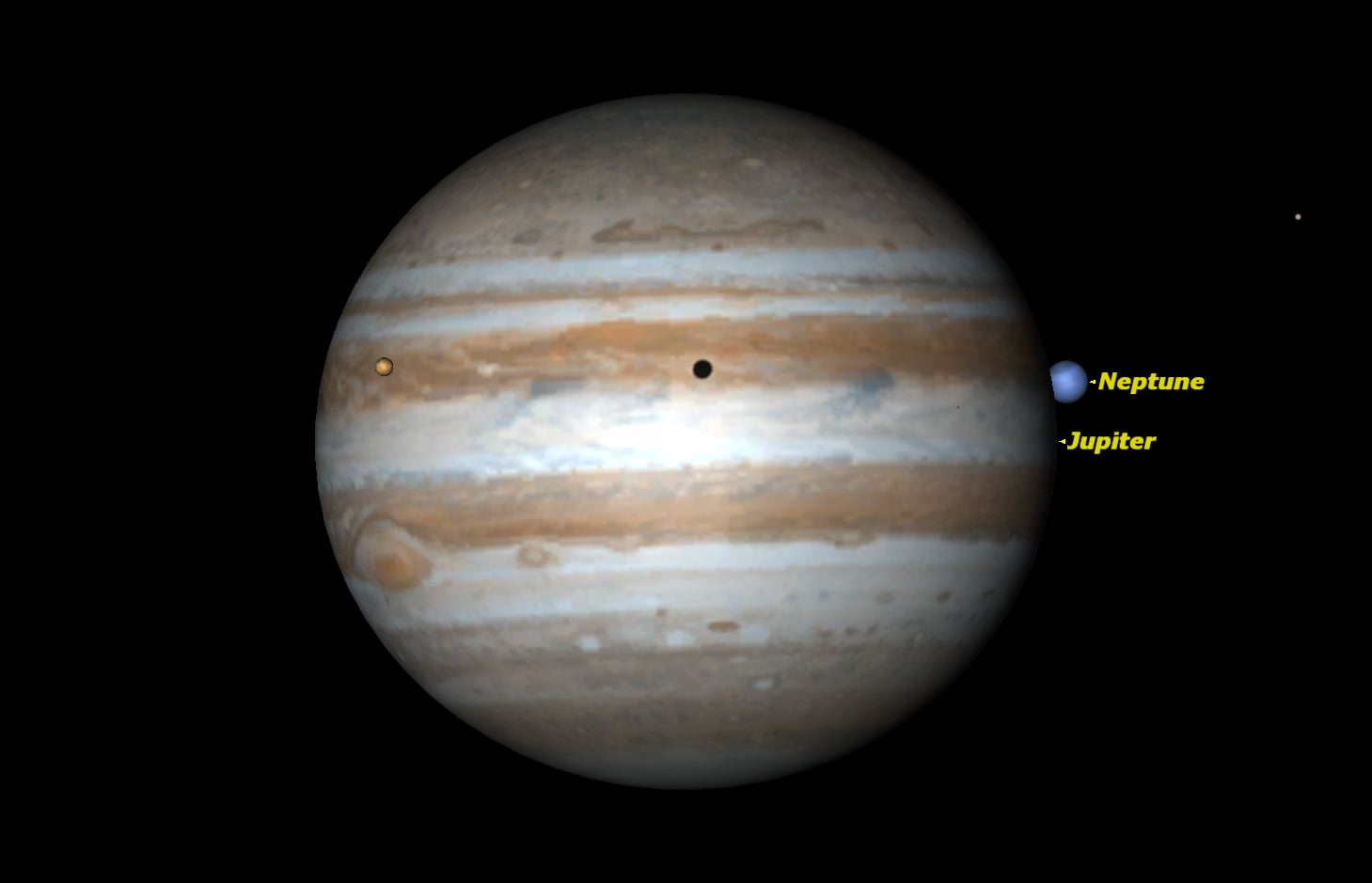 | |||||||||||||||||||||||||||||||||||||||||||||||
| For education orders please call 1-877-290-8256. Welcome to the August Fourth Week Featured Article! Who Discovered Neptune? Geoff Gaherty, Starry Night EducationThis week, on Friday August 29, Neptune will be in opposition to the Sun: exactly opposite the Sun in Earth’s sky. Neptune was supposedly discovered in 1846 by Johann Gottfried Galle using calculations by Urbain Le Verrier and John Couch Adams, making it a joint British-French-German discovery. Yet the first man to observe Neptune was none of these, but instead the Italian astronomer Galileo Galilei. While sketching the moons of Jupiter with his newly discovered telescope, Galileo twice drew Neptune, which happened to be in conjunction with Jupiter in early 1613. It’s usually said that Galileo mistook Neptune for a star because of its slow movement.
Recently It’s interesting to examine historic observations like Galileo’s to see what was actually observed. Modern planetarium programs allow us to do this
Here is Galileo’s sketch from 1612 December 27/28 
This view from Starry Night demonstrates the accuracy of Galileo’s observation. Credit: Starry Night Software Jupiter is framed by Ganymede on the left and Europa on the right, with Callisto a little further to the right. Neptune is on the left, and slightly north of Jupiter. Io was probably too close to Jupiter to be resolved at the low magnification Galileo used.
Just over a month later, Galileo sketched the moons again 
Again Starry Night shows how accurate Galileo’ s observations were. Credit: Starry Night software. All four moons are off to Jupiter’s right, and Galileo has portrayed their positions accurately. Neptune is again to Jupiter’s left, but now south of Jupiter.
What happened between these two sketches is truly remarkable. When the first sketch was made, Neptune was moving from left to right relative to Jupiter. On 1613 January 3/4 Neptune actually passed behind Jupiter, an extremely rare planetary occultation. Had Galileo observed just before dawn on the morning of the 4th, he would have seen Neptune emerging from behind the dark limb of Jupiter. Neptune was stationary relative to Jupiter on January 13, and then started moving from right to left, passing Jupiter again on January 23, ending up again to the left of Jupiter for Galileo’s second observation on January 28/29. Galileo’s primitive telescope was capable of only about 30 times magnification. Neptune would have looked to him like a star, just as it does in small telescopes today. It takes a very large telescope, and very good conditions to see anything like the view in Starry Night. I once had the opportunity to observe Neptune through the largest telescope in Canada, the 74-inch reflector at the David Dunlap Observatory north of Toronto. Even with this telescope, Neptune was a featureless blue disk. |
| ||||||||||||||||||||||||||||||||||||||||||||||
© 2016 Simulation Curriculum Corp. All Rights Reserved. |
|||||||||||||||||||||||||||||||||||||||||||||||



